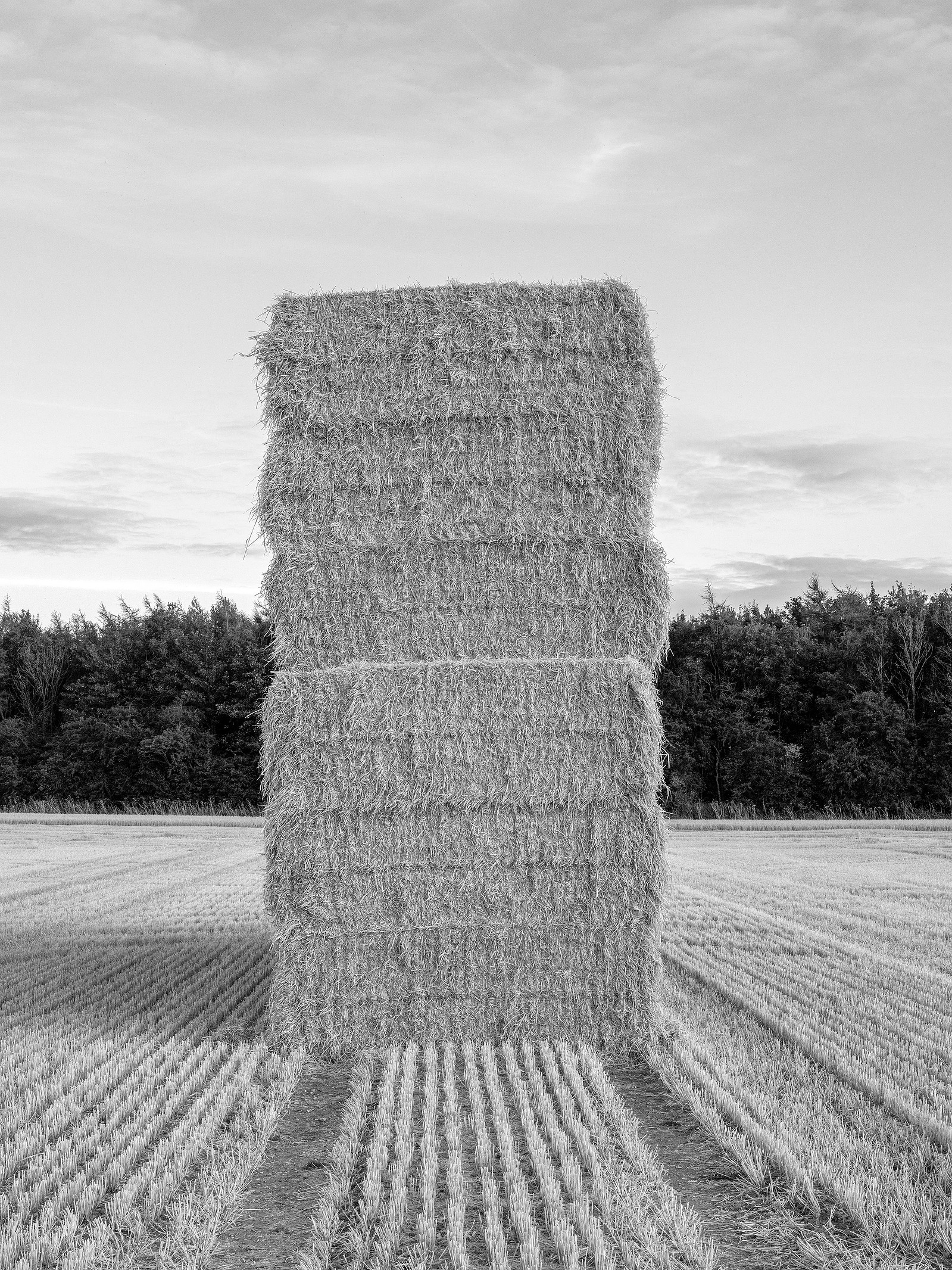
Straw Bale Towers
In late September 2019, I began photographing straw bale towers on farmland in the East Riding of Yorkshire. Built from up to fourteen tightly packed rectangular bales, each tower stood as high as sixteen feet and weighed over two thousand kilograms. For two weeks every year, these temporary monuments cast long shadows across stubble fields, obscuring trees and subtly transforming the landscape, before being hauled away to nearby barns for storage.
What drew me to these structures was their quiet sculptural presence—monolithic forms that seemed almost like accidental land art. Though entirely functional, they momentarily redefined the rural horizon, turning familiar farmland into something strange and striking. Their scale and symmetry stood in contrast to the organic sprawl of the surrounding landscape, while their impermanence made them all the more compelling. These structures exist in a narrow window of seasonal transition, reflecting the quiet rhythms of agricultural life. Photographing them became a way to preserve a fleeting transformation—both in the land and in how we perceive it.
-- Upcoming publication and exhibition 2025 >>>>>>>
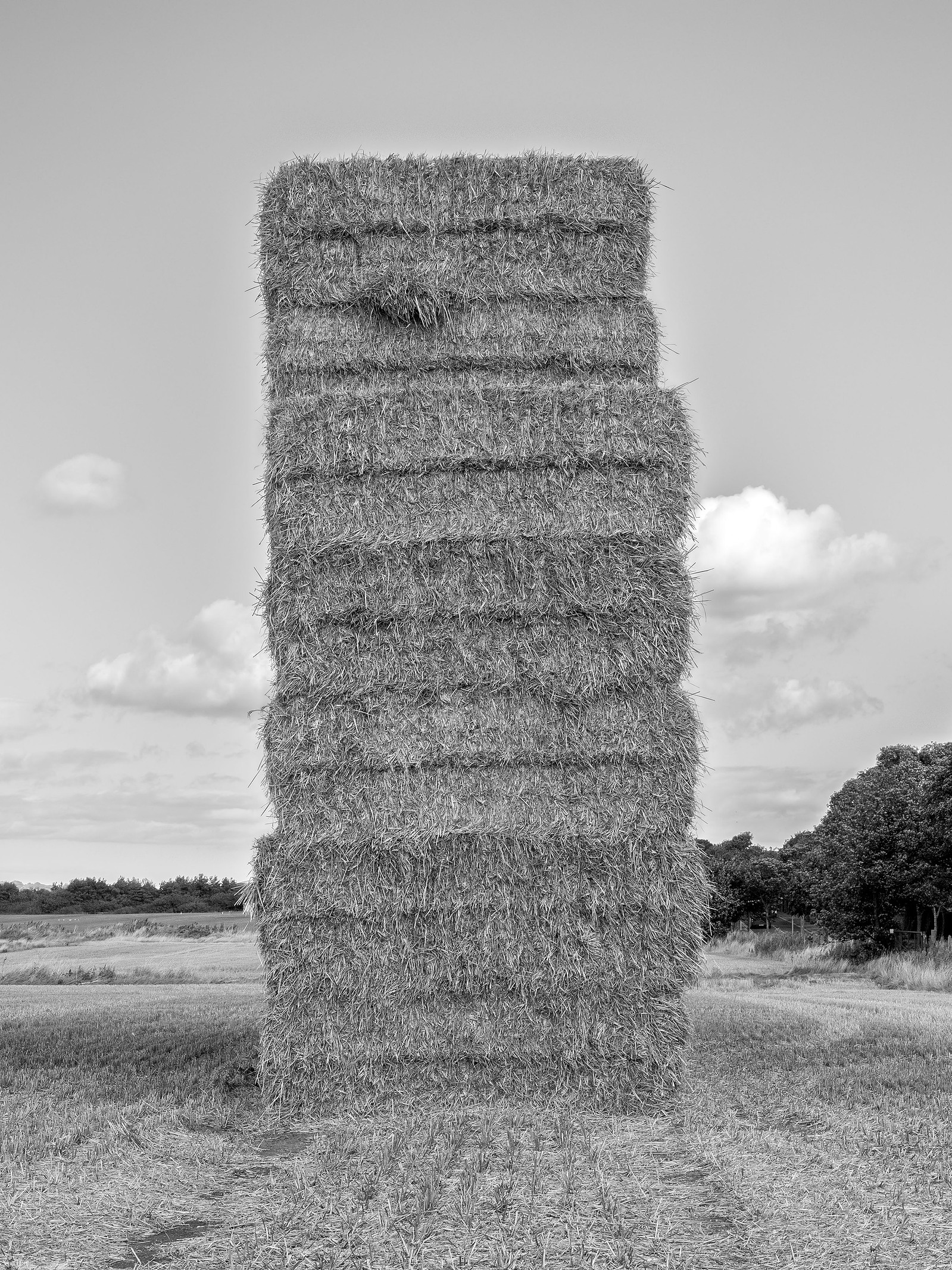
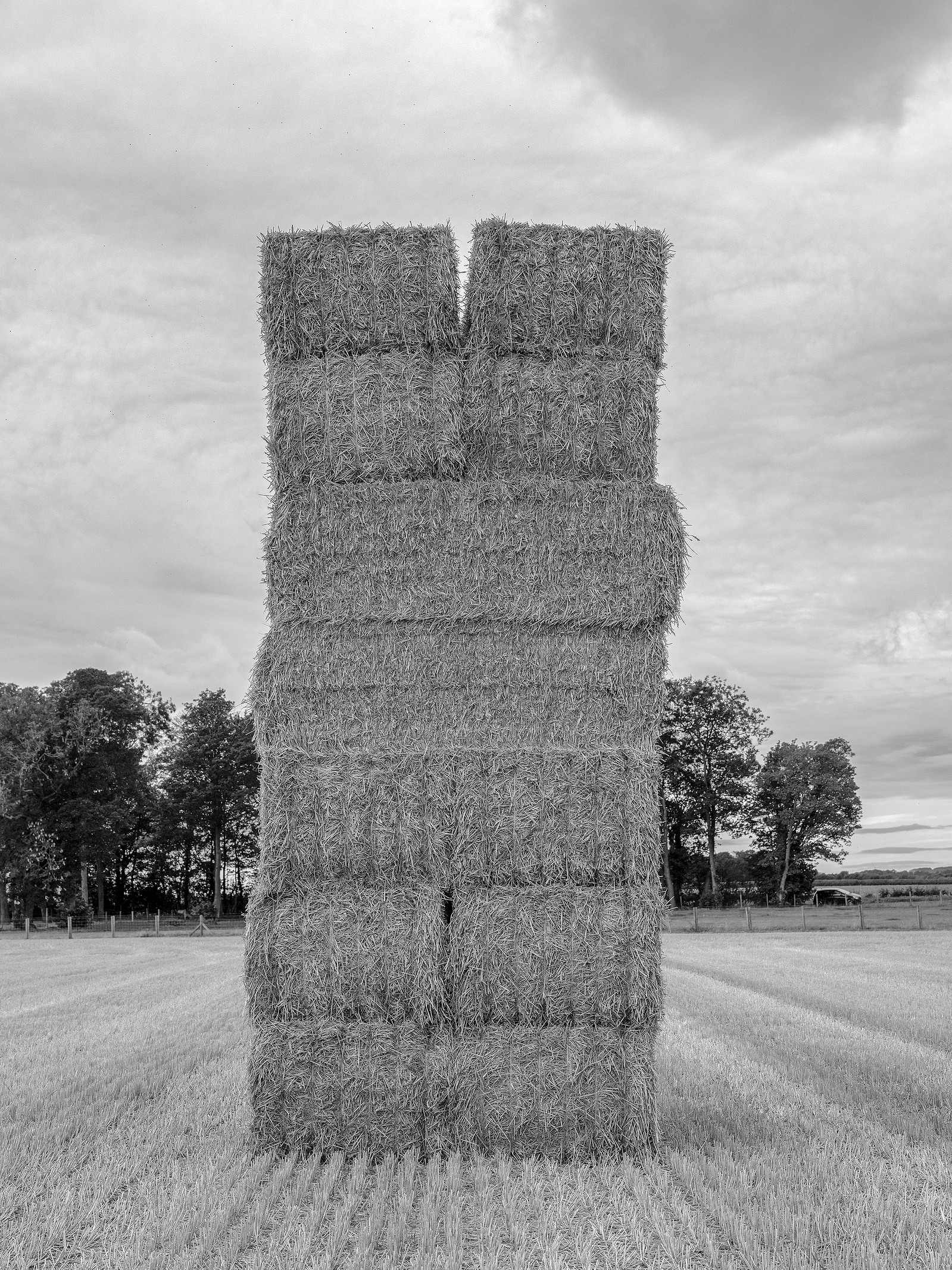

Despite their imposing presence, the straw towers serve as quiet sanctuaries—rabbits shelter at their base, while birds find nesting spots between the bales. Straw's warmth, dryness, and natural camouflage create ideal conditions for small animals, offering both protection and comfort in the open fields.
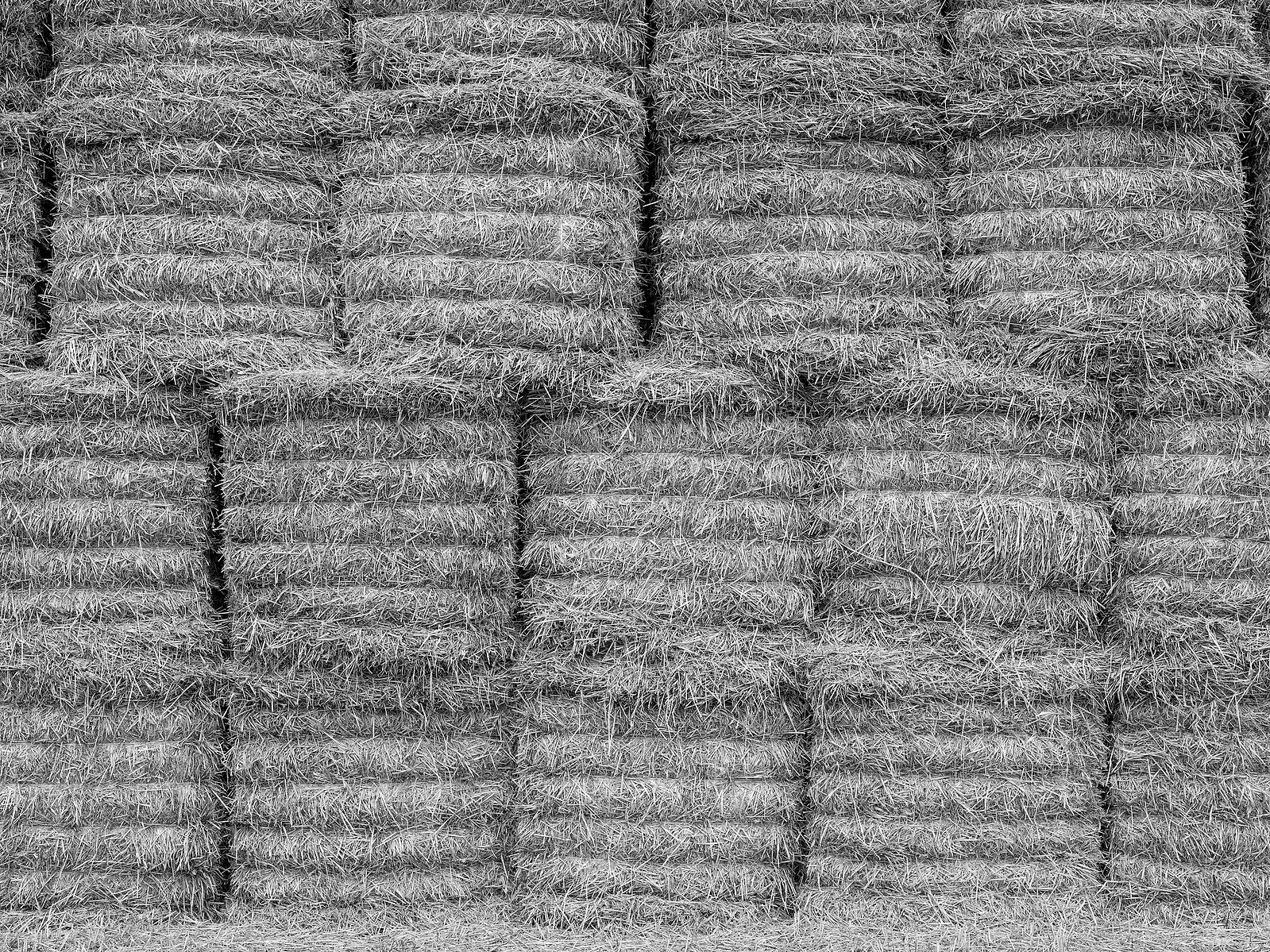


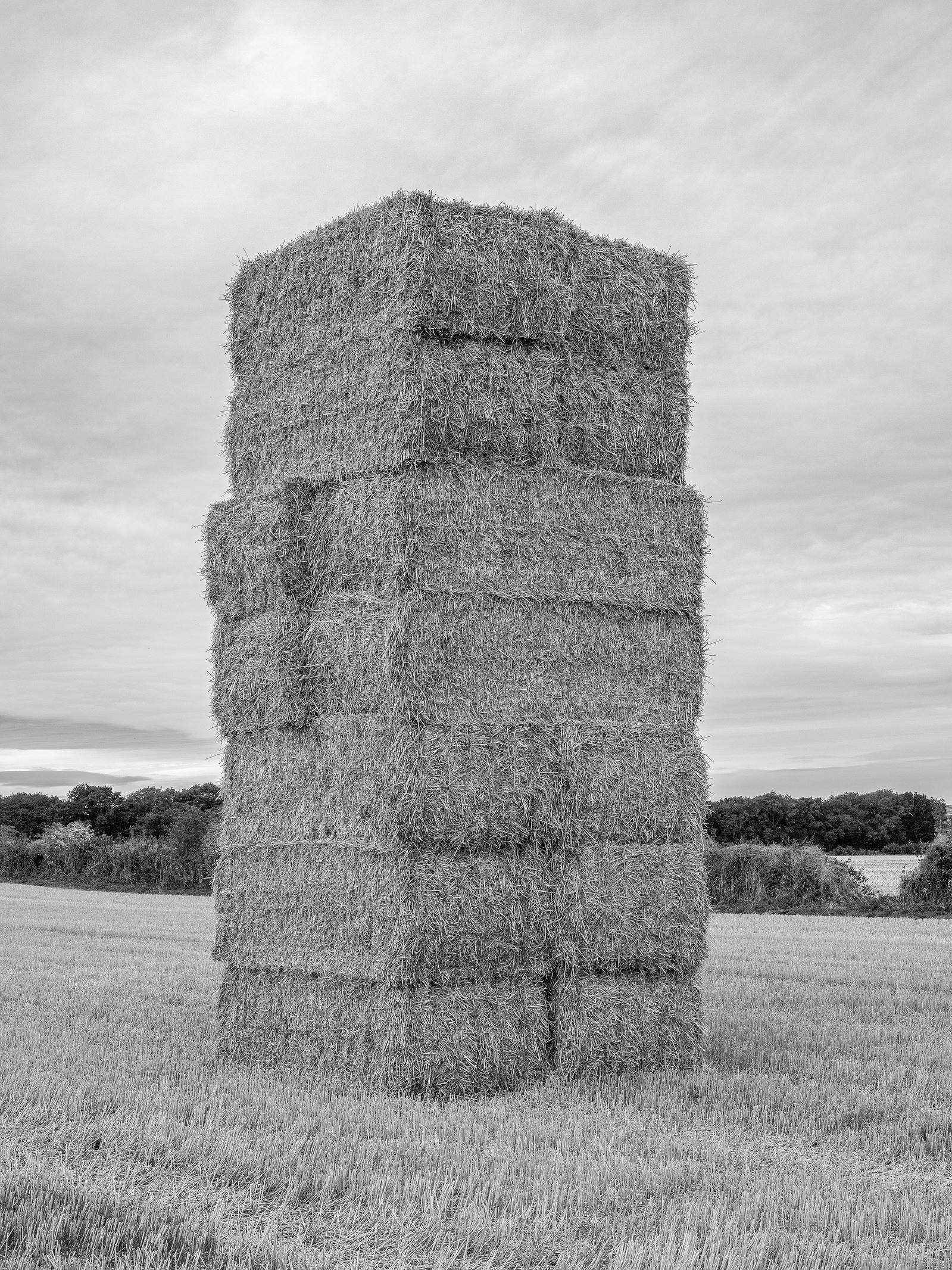
Straw bales are eco-friendly, biodegradable, and low-impact. They hold carbon captured by crops as they grow. If composted or added to soil instead of burned, they help store carbon and improve soil health. This makes them a simple, natural way to benefit the environment.
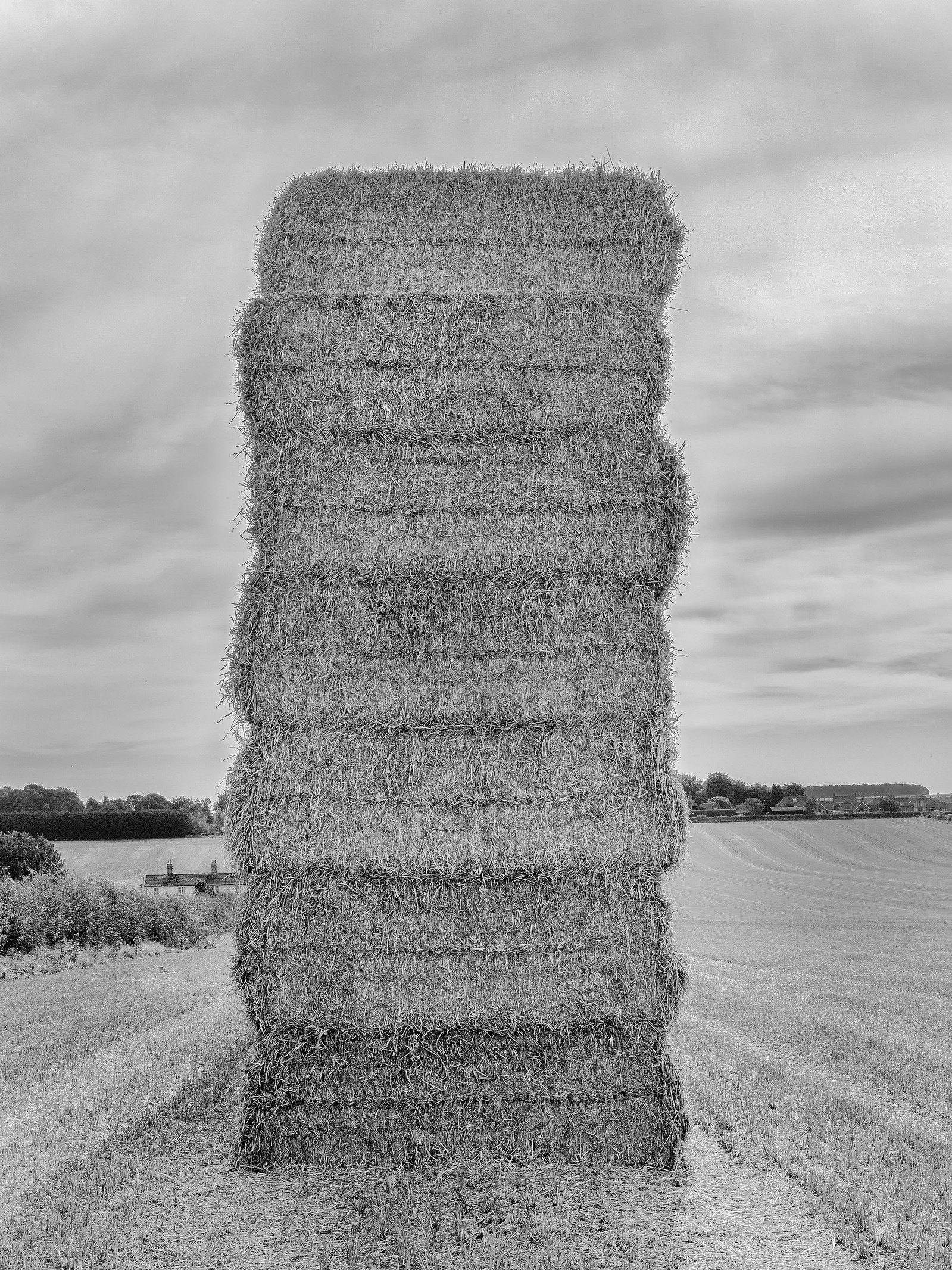
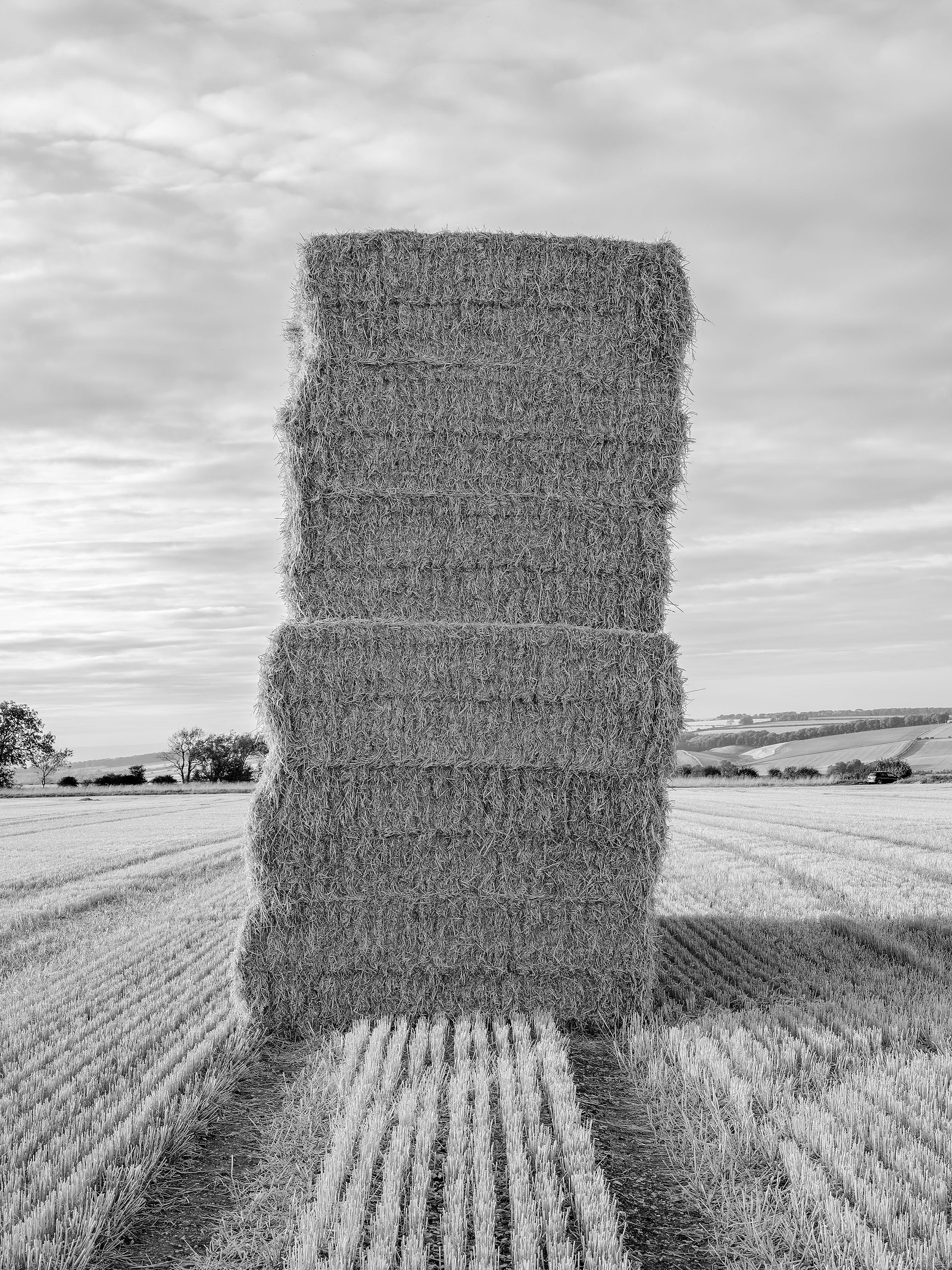
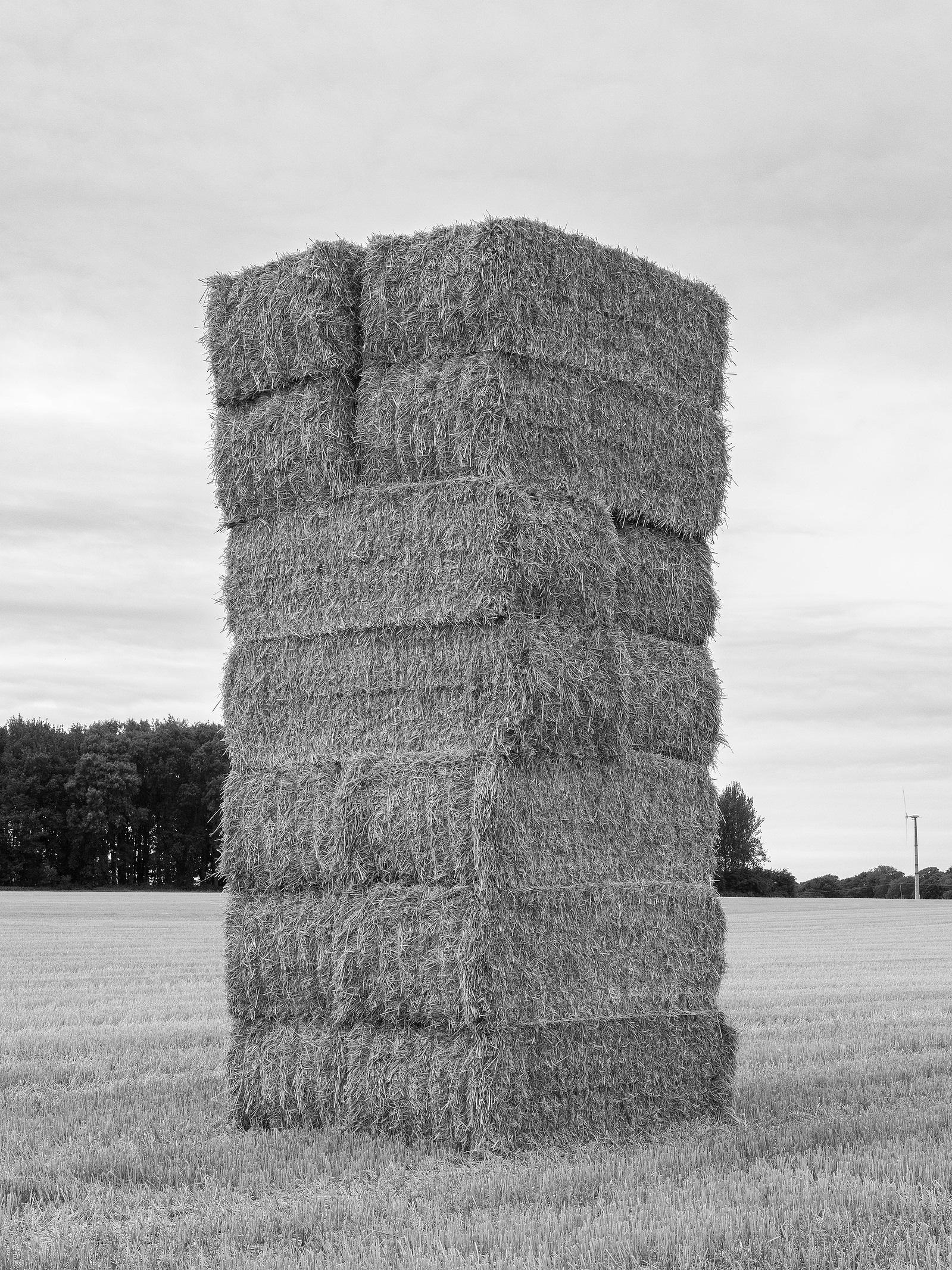
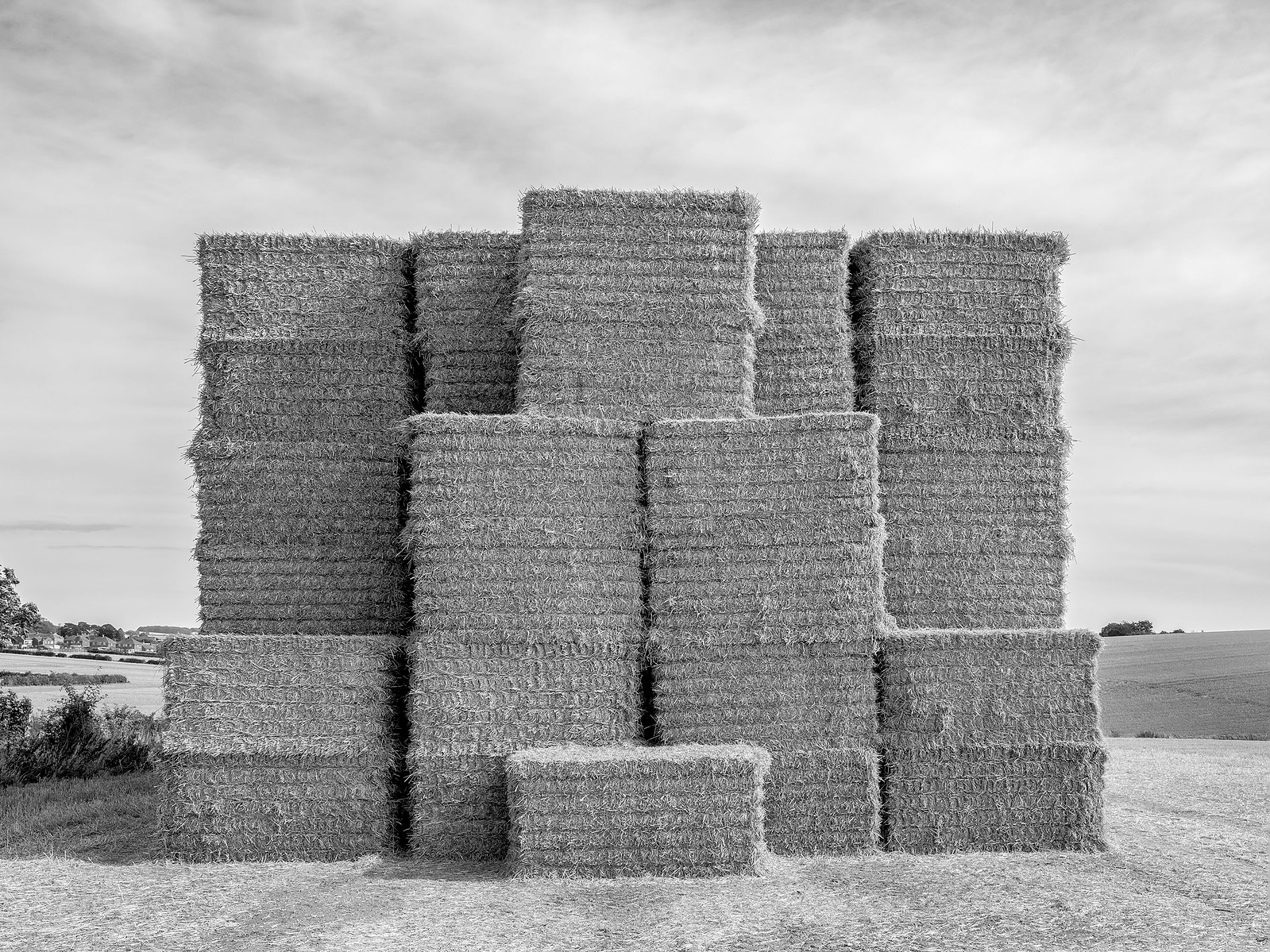
In recent years, several arson incidents have targeted straw bale towers across Yorkshire, causing significant losses for farmers. In March 2025, a fire in Whitby destroyed a barn and approximately 200 hay bales, with North Yorkshire Police treating the incident as a suspected arson attack. Similarly, in April 2024, a fire at a farm near York consumed 300 straw bales, prompting a large-scale firefighting response. These deliberate fires not only result in financial losses but also disrupt the seasonal agricultural cycle, highlighting the vulnerability of rural communities to such criminal acts.
